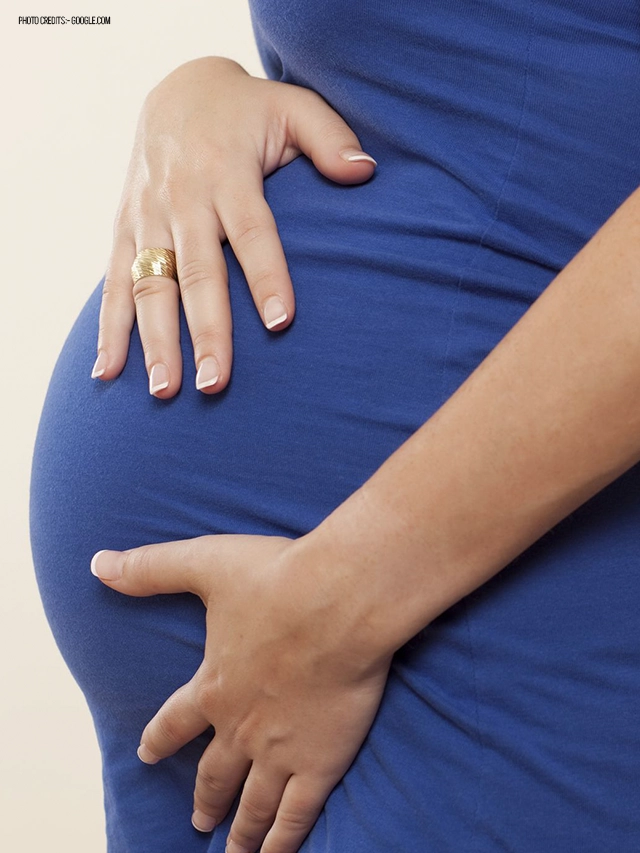
HEALTH BLOG
Greenish Discharge During Pregnancy: Understanding the Causes, Symptoms, and Treatments
-
Rahul Priydarss
Greenish discharge during pregnancy can be a sign of infection and should not be ignored. In this article, we explore the causes of greenish vaginal discharge, such as bacterial vaginosis, trichomoniasis, and sexually transmitted infections (STIs), and discuss symptoms like odor, itching, and pelvic discomfort. We also cover treatment options, when to seek medical attention, and how to prevent complications during pregnancy. If you’re experiencing greenish discharge during pregnancy, it’s essential to consult your doctor for proper diagnosis and care to protect both your health and the health of your baby.
Introduction of Greenish Discharge During Pregnancy:
Greenish discharge during pregnancy may indicate an infection and should be addressed with medical advice to ensure the health of both mother and baby. During pregnancy, it’s not uncommon to experience changes in vaginal discharge due to hormonal fluctuations, but if the discharge turns green or takes on an unusual color, it could signal an underlying issue. Most often, greenish discharge points to infections like bacterial vaginosis or sexually transmitted infections (STIs), which need timely attention. Recognizing the signs early and consulting with your healthcare provider is essential to safeguard your pregnancy and prevent potential complications.
Pregnancy is a time of profound changes in the body, and one of the most common alterations women notice is in their vaginal discharge. In many cases, the increase in discharge is entirely normal and part of the body’s way of maintaining a healthy environment in the vaginal area. However, if the discharge becomes greenish, it can be alarming, and understanding the potential causes, symptoms, and when to seek medical attention is crucial. In this guide, we will explore everything you need to know about greenish discharge during pregnancy, helping you stay informed and take the right steps to protect your health.
What is Greenish Discharge During Pregnancy:
Greenish discharge during pregnancy refers to an unusual vaginal discharge that has a green or greenish tint. This type of discharge can be concerning as it often indicates an infection, such as bacterial vaginosis, trichomoniasis, or other sexually transmitted infections (STIs). While changes in vaginal discharge are common during pregnancy due to hormonal shifts, greenish discharge is not normal and typically suggests a bacterial or parasitic imbalance in the vaginal flora.
Women experiencing greenish discharge during pregnancy should consult their healthcare provider to determine the underlying cause and receive appropriate treatment. Early diagnosis and treatment are essential to prevent complications, as untreated infections may pose risks to both the mother and the baby, including premature birth or low birth weight. If the discharge is accompanied by other symptoms like a strong odor, itching, or pelvic pain, seeking medical advice becomes even more critical.

Table of Contents
What Causes Greenish Discharge During Pregnancy:
Greenish discharge during pregnancy is usually a sign of infection, which may range from mild to severe. The most common infections associated with this type of discharge include bacterial vaginosis (BV), trichomoniasis, and other sexually transmitted infections (STIs). Each of these conditions presents unique challenges during pregnancy, and understanding them can help you identify the problem and seek appropriate treatment.
- Bacterial Vaginosis (BV): One of the leading causes of greenish discharge is bacterial vaginosis, which occurs when there is an imbalance in the natural bacteria that reside in the vagina. Normally, healthy bacteria like lactobacilli keep the vaginal environment balanced and free of infections. However, if harmful bacteria overgrow, it can result in bacterial vaginosis. BV often causes a thin, greenish or gray discharge, accompanied by a strong fishy odor. While BV is common, it is important to treat it during pregnancy, as it has been linked to premature birth, low birth weight, and other complications.
- Trichomoniasis: Another cause of greenish discharge is trichomoniasis, a sexually transmitted infection caused by a parasite known as Trichomonas vaginalis. This infection can lead to unpleasant symptoms, including a greenish, frothy discharge, vaginal irritation, and discomfort during urination or sexual intercourse. Trichomoniasis can also increase the risk of preterm birth and other pregnancy complications if left untreated. Proper diagnosis and treatment are crucial to protect both the mother and the baby.
- Sexually Transmitted Infections (STIs): Other sexually transmitted infections, such as gonorrhea or chlamydia, can also result in abnormal discharge during pregnancy. These infections often lead to a greenish or yellowish discharge, along with symptoms like pain during intercourse or urination, pelvic pain, and in some cases, fever. STIs pose serious risks to both maternal and fetal health, making early detection and treatment essential.
Symptoms Accompanying Greenish Discharge:
Aside from the color of the discharge, there are several other symptoms that can accompany greenish discharge during pregnancy. Identifying these symptoms can help pinpoint the cause and ensure that you receive the right treatment. Some of the most common symptoms include:
- Strong or Fishy Odor: A foul-smelling discharge, particularly one that has a fishy odor, is a classic sign of bacterial vaginosis or other bacterial infections. This odor may become more noticeable after intercourse or washing.
- Itching and Irritation: Many infections, particularly trichomoniasis and yeast infections, can cause intense itching or irritation in the vaginal area. This discomfort may be constant or worsen after certain activities like intercourse or urination.
- Discomfort During Urination: Pain or a burning sensation when urinating is another symptom often associated with infections like trichomoniasis, gonorrhea, or chlamydia. If you experience pain while using the bathroom, it is important to mention this to your healthcare provider.
- Pelvic Pain: Some infections can cause cramping or pain in the pelvic area, which may feel similar to menstrual cramps. This pain is typically mild but can become more severe if the infection spreads.
- Swelling or Redness: Inflammation in the vaginal area, including swelling or redness, may accompany greenish discharge, particularly in cases of trichomoniasis or severe bacterial infections.
- Vaginal Dryness: Occasionally, infections may cause vaginal dryness, leading to discomfort during intercourse or daily activities. This dryness may be accompanied by itching or a burning sensation.

When to Seek Medical Attention:
Knowing when to see a doctor for greenish discharge is essential to ensure your health and the safety of your pregnancy. In general, any change in the color, consistency, or smell of your vaginal discharge should prompt you to seek medical advice, especially if it is accompanied by other symptoms like pain, odor, or irritation.
- Immediate Medical Attention: If you notice greenish discharge along with a strong odor, discomfort during urination or sex, or pelvic pain, don’t hesitate to make an appointment with your healthcare provider. These symptoms are often signs of infection that require prompt treatment to avoid complications.
- Regular Check-ups: During your routine prenatal appointments, make sure to mention any changes in your discharge, even if they seem minor. Your doctor may perform tests to rule out infections and ensure that everything is progressing normally.
- Tests and Diagnosis: If your doctor suspects an infection based on your symptoms and discharge, they will likely perform a pelvic exam to assess the situation. A swab of the vaginal discharge may be taken for laboratory testing, which can help identify the specific infection. In some cases, additional tests like a urine sample may be requested to check for signs of a urinary tract infection (UTI) or other issues.
Treatment for Greenish Discharge During Pregnancy:
The treatment for greenish discharge during pregnancy will depend on the underlying cause of the problem. The most common treatments for infections causing greenish discharge include antibiotics, antiparasitic medications, and in some cases, antifungal treatments.
- Antibiotics: If your greenish discharge is caused by bacterial vaginosis, your doctor will likely prescribe antibiotics such as metronidazole or clindamycin. These medications help restore the balance of bacteria in your vagina and clear up the infection. It’s important to complete the full course of antibiotics, even if your symptoms improve before you finish the medication.
- Antiparasitic Medications: For trichomoniasis, treatment typically involves antiparasitic medications like metronidazole or tinidazole. These drugs help eliminate the parasitic infection and alleviate symptoms. As with antibiotics, it’s important to take the entire prescription to ensure the infection is fully treated.
- Antifungal Treatments: While greenish discharge is less commonly associated with yeast infections, if your doctor suspects a fungal infection, they may recommend antifungal medications in the form of vaginal suppositories, creams, or oral pills.
Can Greenish Discharge Affect the Baby:
Untreated infections that cause greenish discharge can pose risks to both the mother and the baby. Conditions like bacterial vaginosis and trichomoniasis, if left unaddressed, can lead to serious complications, including:
- Premature Birth: Infections like bacterial vaginosis have been associated with an increased risk of preterm labor and premature birth, which can have lasting effects on the baby’s health.
- Low Birth Weight: Babies born to mothers with untreated infections may have a lower birth weight, which can increase their risk of health issues after birth.
- Infections in Newborns: Some infections can be passed from mother to baby during childbirth, potentially leading to infections in the newborn. This can result in health problems that may require immediate medical attention.
Prevention Tips: How to Avoid Greenish Discharge During Pregnancy:
The best way to avoid greenish discharge during pregnancy is to practice good vaginal hygiene and take steps to prevent infections. Here are some tips to help keep your vaginal area healthy and reduce your risk of infections:
- Wear Breathable Underwear: Choose underwear made from breathable fabrics like cotton to help reduce moisture buildup, which can contribute to infections.
- Avoid Douching: Douching can disrupt the natural balance of bacteria in your vagina, increasing your risk of infections. It’s best to avoid this practice during pregnancy.
- Practice Safe Sex: Using condoms during intercourse can help prevent sexually transmitted infections that may lead to greenish discharge.
- Maintain a Healthy Diet: A balanced diet rich in vitamins and minerals can help support your immune system and keep your body in optimal condition, reducing the likelihood of infections.
- Stay Hydrated: Drinking plenty of water helps flush out toxins from your body and supports overall health.
- Consult Your Doctor Regularly: Make sure to attend all prenatal check-ups and report any unusual symptoms, including changes in discharge, so your doctor can monitor your health closely.
FAQs about Greenish Discharge During Pregnancy:
A1: Greenish discharge during pregnancy often indicates an infection such as bacterial vaginosis, trichomoniasis, or an STI, requiring medical attention.
A2: No, greenish discharge is not normal. It typically signals an infection, and you should consult your doctor for diagnosis and treatment.
A3: Common causes include bacterial vaginosis, trichomoniasis, and other sexually transmitted infections (STIs).
A4: If left untreated, infections causing greenish discharge can lead to complications like premature birth or low birth weight.
A5: Treatment often involves antibiotics or antiparasitic medications, depending on the type of infection causing the discharge. Always follow your doctor’s advice.

-Please remember, to always consult with healthcare professionals or Doctors for personalised advice related to medical conditions.
Conclusion:
Greenish discharge during pregnancy can be a sign of an infection that requires medical attention. While it’s important not to panic, recognizing the symptoms and seeking prompt treatment is crucial for ensuring a healthy pregnancy. Whether the cause is bacterial vaginosis, trichomoniasis, or another infection, early diagnosis and appropriate treatment can help prevent complications and protect both you and your baby. By maintaining good hygiene, practicing safe sex, and regularly consulting with your healthcare provider, you can keep your body healthy and minimize the risk of infections during pregnancy.




